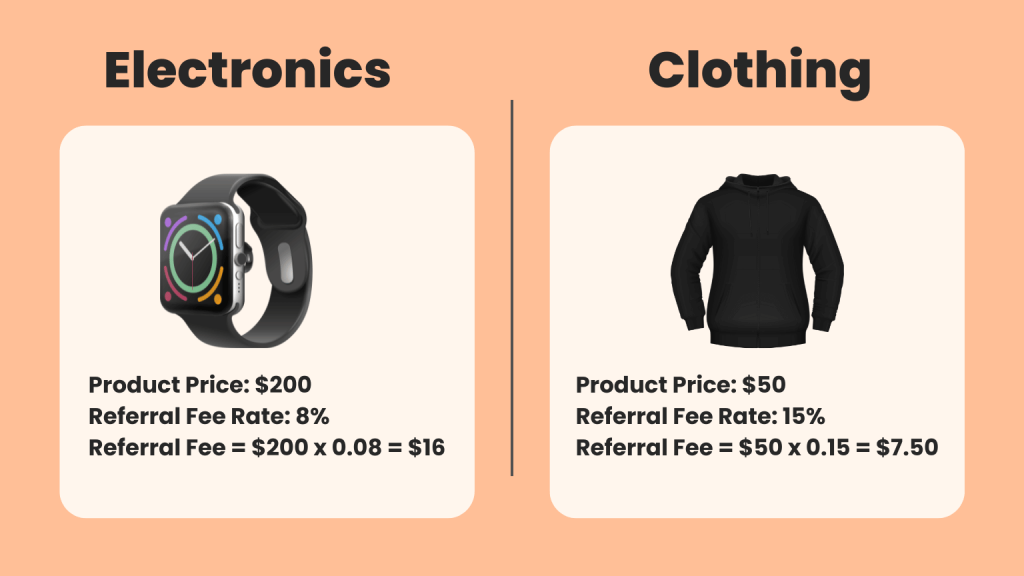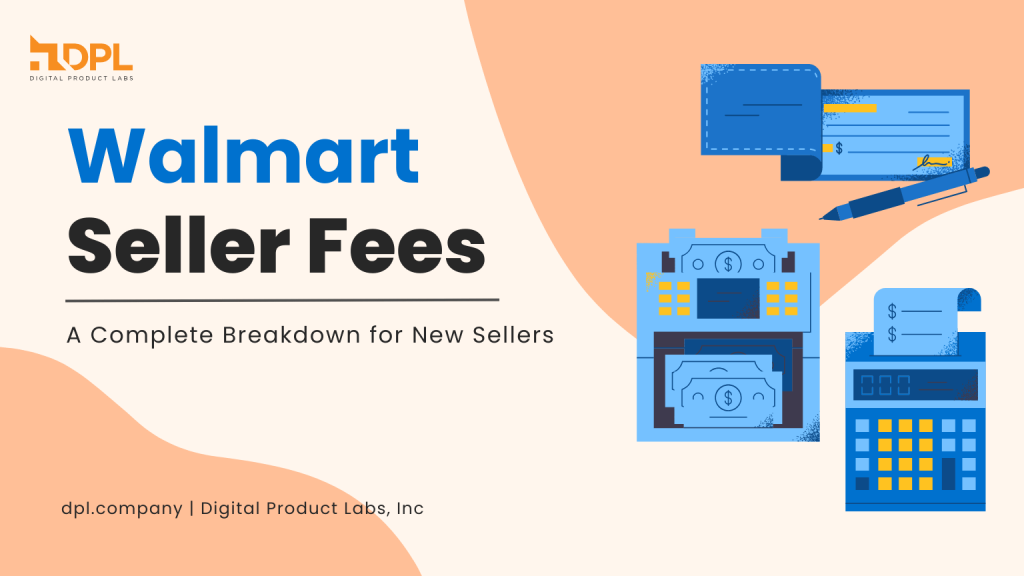Walmart Marketplace
Overview for Sellers
Walmart Marketplace is a prominent e-commerce platform allowing third-party sellers to reach millions of customers online. As one of the largest retail companies in the world, Walmart offers an enticing opportunity for sellers to grow their businesses by providing a trusted brand name, a vast customer base, and reliable logistical support. Sellers benefit from Walmart’s established reputation and extensive marketing reach, which can significantly enhance product visibility and sales potential.
Importance of Understanding Walmart Seller Fees
For new sellers venturing into Walmart Marketplace, understanding the fee structure is crucial. The fees associated with selling at Walmart impact profit margins, pricing strategies, and overall business sustainability. A clear grasp of these fees helps sellers make informed decisions, optimize their pricing, and manage their businesses efficiently. This comprehensive guide provides a detailed breakdown of all the fees associated with selling on Walmart Marketplace, ensuring new sellers have the knowledge they need to succeed.
This blog aims to provide a thorough understanding of Walmart Seller Fees, helping new sellers navigate the cost structures, manage their expenses effectively, and maximize their profitability. By the end of this guide, sellers will have a complete overview of the different types of fees involved and practical strategies to handle them.
Zero Monthly or Subscription Walmart Seller Fees

No Subscription Costs
One of the standout features of selling on Walmart Marketplace is the absence of monthly subscription or membership fees. Unlike other e-commerce platforms that require sellers to pay a recurring monthly fee, Walmart offers a more accessible entry point by eliminating this cost barrier. This approach is particularly beneficial for new sellers, as it reduces the initial financial commitment, allowing them to focus on setting up their store and listing their products without worrying about upfront costs.
Benefits for New Sellers
The absence of subscription fees means new sellers can test the waters of e-commerce without incurring significant upfront costs. This makes Walmart Marketplace an attractive option for startups, small businesses, and entrepreneurs looking to expand their reach without the burden of monthly expenses. This fee structure supports growth by allowing sellers to reinvest more revenue into marketing, inventory, and business development.
Manage your Wamlart Inventory & Avoid Overselling with Walmart Integration – DPL
Walmart Referral Fees
Referral fees are common in online marketplaces, where sellers pay a percentage of each sale to the platform. On Walmart Marketplace, a referral fee is charged on each item sold, calculated as a percentage of the total sales price, including shipping costs but excluding any sales tax. These fees are essential for maintaining the platform’s operations, marketing efforts, and customer service capabilities.
Fee Structure by Category
Walmart’s referral fee structure varies by product category, with rates typically ranging from 6% to 20%. Here’s a detailed breakdown of referral fees for different categories:
- Clothing & Accessories: 15%
- Electronics: 8%
- Furniture & Decor: 15%
- Home & Garden: 15%
- Health & Personal Care: 15%
- Beauty Products: 8%
- Jewelry: 20%
These rates align with industry standards and are competitive compared to other e-commerce platforms. Sellers should carefully review the fee structure for their specific product categories to understand how it affects their overall pricing and profitability.
Walmart Seller Fees Calculation Examples

Understanding how referral fees are calculated is crucial for accurate pricing and profit margin analysis. Here are a few examples:
- Example 1: Electronics
- Product Price: $200
- Referral Fee Rate: 8%
- Referral Fee = $200 x 0.08 = $16
- Example 2: Clothing
- Product Price: $50
- Referral Fee Rate: 15%
- Referral Fee = $50 x 0.15 = $7.50
These examples highlight how referral fees are calculated and deducted from the total sales price, affecting sellers’ net revenue.
Create Seller Account Today and Save Upto 50% on Fees
Fulfillment Service Fees for Sellers in Walmart
Fulfillment Options
Sellers on Walmart Marketplace have two primary fulfillment options:
- Walmart Fulfillment Services (WFS): A program where Walmart handles storage, packaging, and shipping on behalf of the seller.
- Self-Fulfillment: Sellers manage their storage, packaging, and shipping.
Each option has its own cost implications, and sellers should choose the one that aligns with their business model and logistical capabilities.
WFS Fee Breakdown

Walmart Fulfillment Services (WFS) charges fees based on a combination of receiving, storage, and shipping costs. Here’s a detailed breakdown:
- Receiving Fees: Charges for processing and storing inventory upon arrival at Walmart’s fulfillment centers.
- Storage Fees: Monthly fees based on the cubic footage of products stored. Rates vary depending on the season, with higher rates during peak times (e.g., holidays).
- Shipping Fees: Costs associated with picking, packing, and shipping orders to customers. These fees are typically based on the size and weight of the product.
Self-Fulfillment Costs
For sellers who opt for self-fulfillment, costs include:
- Shipping and Handling: Direct expenses related to packaging and shipping orders. Sellers must negotiate shipping rates with carriers or use discounted shipping options provided by Walmart.
- Handling Returns: Costs associated with managing returns, including shipping costs for returned items and handling fees.
Walmart Fulfillment Service Storage Fees
WFS Storage Costs
Storage fees are an important consideration for sellers using Walmart Fulfillment Services. Fees are calculated based on the size and volume of products stored in Walmart’s fulfillment centers. Typically, these fees are charged per cubic foot and vary by month.
Monthly Storage Fees
- Standard Storage Fees: Typically range from $0.75 to $0.85 per cubic foot per month, depending on the time of year.
- Peak Season Rates: Higher rates during peak seasons (e.g., October to December), reflecting increased demand for storage space.
Long-Term Storage Fees
Walmart charges additional fees for products stored for extended periods, usually over 12 months. To avoid these fees, sellers are encouraged to monitor inventory levels and implement strategies for faster turnover, such as promotions or discounts.
Manage your Wamlart Inventory & Avoid Overselling with Walmart Integration – DPL
Key Points about Walmart Seller Fees
Selling on Walmart Marketplace offers significant opportunities for reaching a broad customer base, but understanding the fee structure is critical for success. Key Walmart Sellerfees to consider include:
- Referral Fees: Vary by product category, impacting overall profitability.
- Walmart Fulfillment Service Fees: Include receiving, storage, and shipping costs.
- Storage Fees: Apply to items stored in Walmart’s fulfillment centers, with additional charges for long-term storage.
Tips for Managing Walmart Seller Fees
- Optimize Product Listings: Ensure that product titles, descriptions, and images are compelling to increase sales and turnover.
- Use WFS Strategically: Evaluate the benefits of Walmart Fulfillment Services based on product size, weight, and storage duration.
- Monitor Inventory Levels: Review inventory regularly to avoid long-term storage fees and implement sales strategies to move excess stock.
Encouragement for New Sellers
Create Seller Account Today and Save Upto 50% on Fees
Understanding and managing fees effectively is key to maximizing profitability on Walmart Marketplace. By staying informed and making strategic decisions, new sellers can grow their businesses and thrive in this competitive environment.
- Further Resources: Explore Walmart’s official resources and seller support guides for more detailed information on fee structures.
- Contact Information: Reach out to Walmart Seller Support or industry experts for personalized advice.
- Next Steps: Start selling on Walmart Marketplace today and apply the knowledge gained from this guide to optimize Walmart Seller fees and boost profitability.
By leveraging the insights provided in this blog, sellers can confidently navigate Walmart Marketplace’s fee structure, ensuring a successful and profitable selling experience.
Manage your Wamlart Inventory & Avoid Overselling with Walmart Integration – DPL
Learn more about Walmart and Walmart’s Inventory Management for Seamless selling.
Efficient Walmart Inventory Management: Tips for Keeping Your Stock in Check
